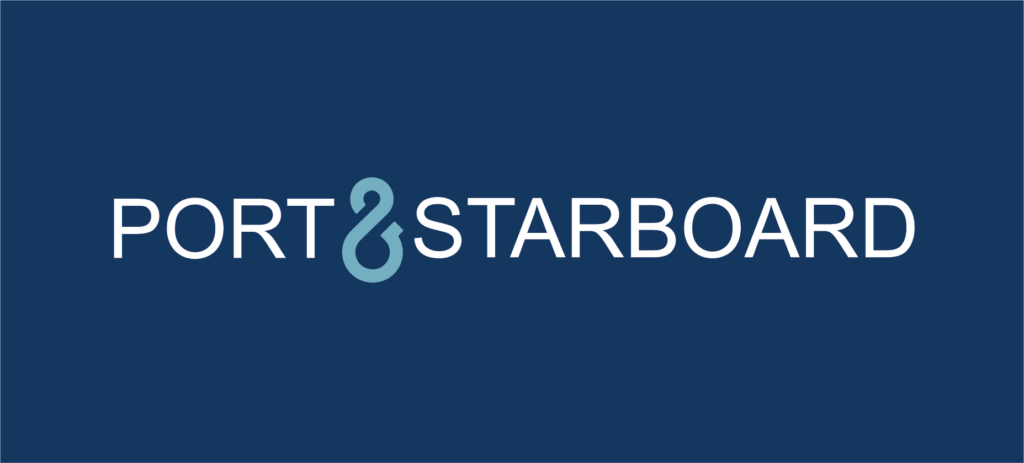Chart Your Course is our innovative approach to Salesforce implementations where we prioritize understanding the customer’s business processes, pain points, needs, and goals. We then translate this insight into a tailored Salesforce implementation roadmap, designed with your future growth in mind. As an option, we also deliver a proof of concept to showcase firsthand the potential benefits, and give your team the chance to provide valuable feedback to further refine your day-one implementation. Users only get one first impression with Salesforce, so we want to ensure that it’s a positive and impactful experience.
Let’s delve into how this innovative strategy transformed our manufacturing client’s sales operations.
Client Overview:
A manufacturing company with a personalized sales style seeks a personalized Salesforce implementation
Our manufacturing client’s success is built on their innovative engineers and their sales team’s customer-focused approach. They know their machines inside out and take time to grasp their customers’ needs and goals to provide a personalized service – not just a sale. That’s why people (including us!) love working with them! They don’t use generic sales pitches, so as they looked to grow into new markets and expand their tech stack, they didn’t want a generic Salesforce solution either.
The Challenge:
Scattered, Inconsistent Data
Prior to working with Port & Starboard, each sales rep had their own way of tracking information. Some diligently tracked their deals in private notepads while others used complex spreadsheets. Whiteboards helped organize closed deals and production timelines, but that wasn’t as helpful to sales reps out in the field. Our client knew the data was there, but because it wasn’t accessible to everyone in real time it made collaboration and reporting more challenging than it needed to be. Rather than reacting to success, leadership wanted to be able to better predict where the next major deals could come from. As they put it, “We need to see what’s in front of us, not just what’s behind us.”
No Standardized Sales and Quoting Process
When your products are a significant investment and are used for highly specialized jobs it can often lead to long sales cycles involving a lot of lead cultivation, needs analysis, and relationship building. This was the case for our manufacturing client. Each sales rep handled their pipeline differently, and while there were general milestones everyone had to reach to close a deal they weren’t always completed in the same manner or order. This made it challenging for leadership to forecast revenue or track the sales pipeline across their reps . Instead managers had to rely on daily back and forth phone calls to get a sense of reps’ daily activities, which prospects were new and which ones were closing, absorbing more of everyone’s time that they’d rather spend selling.
Another major bottleneck in their sales process was quoting. When a sales agent needed to quote a customer, they relied on an admin to generate quotes for them. This was a very manual process involving back and forth phone calls or long email chains which sometimes led to lost information or stalled momentum on a sale. Aside from being a major workload for their admin, this also made tracking version history difficult, having to sleuth through emails to piece together how or why a quote evolved over the course of a negotiation. To solve this, our client wanted to enable sales agents to write their own quotes quickly and consistently.
New to Salesforce
While our client’s sales team was receptive to implementing Salesforce, few had ever used it before. Even fewer had used a CRM before. Recognizing how big of an adjustment this would be for their sales reps, user adoption was a major concern for leadership. For their first Salesforce implementation to be successful, it needed to be simple, easy, and intuitive for anyone to use. They also wanted to give sales reps some firsthand experience with Salesforce so they could grow more comfortable with using a CRM and have more knowledge and context to suggest further improvements before implementing it.
The Solution:
Centralized source of truth for data and documents
A “central source of truth” is a phrase Salesforce uses a lot and for good reason. It’s one of the first and immediate benefits to implementing it, but Salesforce gives you a lot to work with out of the box. We worked with our client to identify which standard features and data points were most relevant to their business. The goal was to keep their system lean and simple, and to construct a data model that fit between what leadership needed to see to make decisions and what sales teams would have the time and capacity to enter. Having that data structure introduced consistency. Sales reps could ask the same questions, get the same information from a prospect, and document it in the same way – no more translating one rep’s notes to another rep’s spreadsheet. Having all that information in one source of truth also saved time and enabled everyone on the team to see the big picture. Reporting on the industries their customers were coming from became easier with everyone using the same categories, and with things like quotes and opportunities integrated together in Salesforce, they could get a clearer picture on a prospect. Sales reps, managers, and admins wouldn’t have to dig through email chains to find a quote’s version history anymore. Anyone on the team could easily see how a quote evolved right under the customer and deal it was related to.
Standardized sales process creates less guessing and more selling
Salesforce provides sales pipeline stages out of the box, but not all of these stages apply to every business. We worked with our client to determine how to consolidate these stages into milestones that made the most sense for their sales cycle. With tips and required steps at each stage, it also guided sales reps to get the right information at the right time. Tailoring forecast categories for each stage to their business ensured they could better calculate each deal’s likelihood of success and create better sales forecasting reports. With a structured, standardized sales process, teams could collaborate better. Product managers, technical experts on the machines they sell, could better support sales reps knowing they have the information they need at the right stage of the deal, and if the deal is handed off to another sales rep, its progress isn’t siloed in their notepads. Every member of the sales team works from the same foundation which still leaves room for their unique sales style.
Finally, a custom quoting process helped to reduce the load on their admin and empower sales reps to write their own quotes. When sales reps reached the point where they were ready to quote a customer, a quote shell would already be created for them. Using templates reduced the tedious task of writing a quote from scratch each time and ensured that formatting and critical legal info was consistent. A custom approval process allowed our client to maintain a layer of quality assurance as they adjusted to the new process, keeping admins and managers in the loop to review pricing and terms before a quote was sent to a customer. If a quote was signed, expired, or still in negotiation, the opportunity’s stage automatically reflected that, ensuring their quoting process was seamlessly integrated into the overall sales process.
Proof of Concept to get a first look at Salesforce
The best way to drive adoption is to make sure your users have a say in the development process, but providing feedback can be very challenging if you’ve never used Salesforce or a CRM before. We wanted to give our client a chance to see what some of their custom features would look like and get to know some of the standard features that Salesforce provides out of the box, like Chatter. So, along with a document summarizing their pain points, our recommendations, and a Salesforce implementation roadmap, we built a proof of concept so that users could see what their day-one implementation could look like. This not only drums up more excitement than having to read a 20-page document, it contextualizes our recommendations in something tangible that users can see and click on. By giving them a better sense of how Salesforce works firsthand, it also empowered them to be stronger advocates of change, providing feedback on how Salesforce could be better customized for them before a day-one implementation.
The Result:
Chart Your Course paves the way for a personalized Salesforce implementation
By the end of our Chart Your Course engagement, our client had a solidified plan for migrating to Salesforce. With a proof of concept illustrating what their first day of Salesforce would look like and a roadmap outlining when and how they could onboard other departments, implementing Salesforce felt less like trying to boil the ocean and more like a targeted, phased strategy. When our client said, “Beyond mere consultants, they became our guiding light, swiftly ushering our company from the shadows of outdated practices into a much more modern-day business,” we may have blushed a little.
Let Port & Starboard help you start your Salesforce voyage right
If you’re feeling overwhelmed by your first Salesforce implementation, we get it! Many of our clients felt the same way before working with us. You’re the experts on your business; we’re the experts on Salesforce. Through Chart Your Course we take the time to collaborate with you to literally chart the best course forward for your organization using Salesforce. Your first Salesforce voyage doesn’t have to be stressful. Schedule a time with us today to learn more about how we can help you set sail with confidence.

